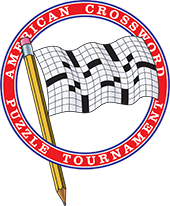Across and Down, and Onward to Victory
Source: The New York TimesDate: March 18, 2011
Byline: Victor Mather
Across and Down, and Onward to Victory
"Mexican salamander." Seven letters. The first two letters are AX. Hmmm.
"Kudos for Menudo" ... could that be BRAVO, or is it BRAVA?
I close my eyes and think hard as I struggle over a challenging crossword puzzle. But I'm not on the subway or in my easy chair. I'm in a hotel ballroom surrounded by hundreds of other people doing the same thing.
This weekend brings the 34th edition of the American Crossword Puzzle Tournament, held for the fourth time in Downtown Brooklyn. The most prestigious competition of its kind in the country, it gained mainstream popularity with the release of the 2006 documentary "Wordplay," which exposed the eccentric, though oddly charming, world of top puzzlers to a wider audience.
I've entered the contest three times. I finished 100th out of about 700 entrants in my maiden appearance, then improved to 96th, missing only one letter in one puzzle (where AXOLOTL crossed BRAVO, if you must know). But last year, I struggled with one particularly difficult puzzle and finished only 125th. I'll be aiming to reclaim my place in the top 100 this weekend.
How fast are the top solvers? Very. I can do a Monday puzzle in The New York Times in five minutes or less, and the more difficult Friday and Saturdays in 15 to 20. And there will be at least 75 people at the contest who are significantly faster than that. Here, the five-time champion Tyler Hinman solves a Monday puzzle in less than two and a half minutes.
The contest begins on Saturday, with three puzzles in the morning and three more, including the traditionally toughest one, in the afternoon. Everyone returns for one more puzzle on Sunday morning. There's a time limit for each puzzle, and points are docked for incorrect (or blank) answers. And most important, there are bonus points for finishing quickly. Preferably very quickly.
Friends occasionally ask to come watch the tournament, but there is really not much to see. Basically, there are rows and rows of people with pencils sitting in a hotel ballroom doing crossword puzzles. It looks a lot like a college final exam being taken by people mostly in their 30s, 40s and 50s.
And it feels like a final exam, too. Especially when you are halfway through a challenging puzzle, trying to remember if an amphora handle is an ANSA or an ANTA, and the smart kids all around you are finishing the puzzle, handing it to a judge and smugly strolling out of the room. Or is it an ASTA?
Solving puzzles as fast as possible also has the potential to suck some of the joy out of them: you have no time to savor a fun clue, or appreciate some clever wordplay. It's like speed reading Jane Austen.
After the Sunday morning puzzle, the scores are added and the top three finishers face off for the championship. This final round is the only one that has the potential to bring some excitement for a neutral observer. The finalists stand on stage and race each other to solve a final, extra-difficult puzzle on large poster boards with markers. There is play-by-play commentary and the audience is sometimes on the edge of its seats, as in 2009 when Mr. Hinman came up with the winning answers with time running out.
First prize is $5,000, and the money drops off quickly after that. So no one's getting rich. Mr. Hinman's five-year hold on the trophy was interrupted last year by a relative newcomer, Dan Feyer. Some of the stars of "Wordplay" will be also back to seek the title. The Wordplay blog of The Times will also be covering the event.
Who will win this year? Will I return to the Top 100? What is an ETUI, anyway? We'll post again after the tournament and let you know how it turned out.

